Walt asked two questions which I thought I should address at some point. Might as well do it here as he commented on yesterday’s installment.
First question: I guess the practical question then would be can you taste a difference between what you are sure is hongni vs what you think is zhuni?
I think this is a pretty complicated issue and will generate as many answers as there are people answering. If I can rephrase it another way, the question is basically whether or not zhuni makes any real difference at all, compared to other types of clays. Does it make better tea? Why is it coveted anyway? What’s all the fuss about? Why is it that the term gets bandied about so often as if it’s the Holy Grail of Yixing pots?
Let me try to address the “does it make better tea” question first. The most common answer I’ve heard with zhuni is that because of its high density, it brings out the higher notes of a tea better than other Yixing pots made with more sandy mixtures. It is most suited to make younger teas with fragrant notes, and will really accentuate teas such as Taiwanese oolongs or, perhaps, a nice young puerh. For teas that have lots of mixed flavours, such as a wet stored puerh, I’ve repeatedly heard people comment that zhuni pots is probably not your best bet.
When people cite high density though, it does make me wonder if you might not do better just with a gaiwan or a porcelain pot, say from Jingdezhen. They are marvelous pieces of art that have an even higher density than zhuni. Why not use those? The counter is, sometimes, that “well, zhuni still breathes a little, whereas porcelain doesn’t at all”. Ok, that may be true, but it doesn’t really answer the question of why that amount of breathability is ok, and a little higher or lower is no good.
I have a hunch that part of the reason zhuni is coveted has relatively little to do with its intrinsic value in tea making, and a lot to do with its relative rarity and its entertainment value. The clay really shines. When I first fished the broken pot out of the bleach bath and rinsed it with water, I was struck by how it has a sheen that normally you only see on well seasoned pots. Zisha pots that are just cleaned don’t look like that at all. At the same time, however, the surface has texture. What’s more, after rubbing it a bit with my hands, I noticed that it started soaking up some of the moisture and oil from my skin, and the colours changed ever so slightly. I know this sounds crazy, but I am quite certain that between the pristine condition of a post-bleach bath and after a rub-down, the pot did change its look.
This sort of thing is a collector’s dream. It’s much the same as how many of us season our pots religiously, and grow fonder as we watch them age in front of our eyes with each use. Zhuni might just be particularly good at showing that transition, and gains a glow that really accentuates that sort of effort.
What’s more, the clay is supposed to break relatively easily during firing, which means it is comparatively rarer. Add on to it the fact that what we commonly recognize as zhuni is now no longer extant, and you’ve got the perfect combination for a collector’s item. It also means it’s a great place for a professional imitator to go work — why fake cheap stuff when you can go for the high priced ones that few have seen?
The second question is a more general one: how much difference does one pot make?
I think the first and most important part of this answer is that it makes a lot less difference than the quality of water and tea going into the pot. As far as I can tell, those things affect the outcome far more than the teapot used.
Now, having said that, I think I can say that different teapots do make teas taste different. I brew aged oolongs in multiple pots. I don’t usually mix different teas in the same pot, but since I only drink maybe two or three kinds of teas regularly, having a pot that only brews dancong, for example, means I’ll never use it. Since I want to season my pots and also want to use them, I use them all for the same kinds of tea.
What I’ve found is that the same tea, brewed in different pots while holding all else constant, will taste different, sometimes significantly so. I just drank the same aged oolong for three days in a row now, in three different pots. The first is an extremely thin skinned hongni pot. The second is my default aged oolong pot, which I now think could actually be a Japanese Bizen ware. The third is pot number four in yesterday’s six red pots. I can safely report that they all tasted quite different. The thin skinned pot made the best tea. The zhuni one (if it’s zhuni) had the sharpest taste, and incidentally, also the most noticeable sourness among the three.
This would, in fact, be anecdotal evidence that zhuni does, in fact, bring out the higher notes — both good and bad. So whether or not it’s really good for your tea or not might just be a bland “it depends”. However, I do think pots make a difference in how a tea comes out.
Finally, a technical issue — I am trying to take pictures with this
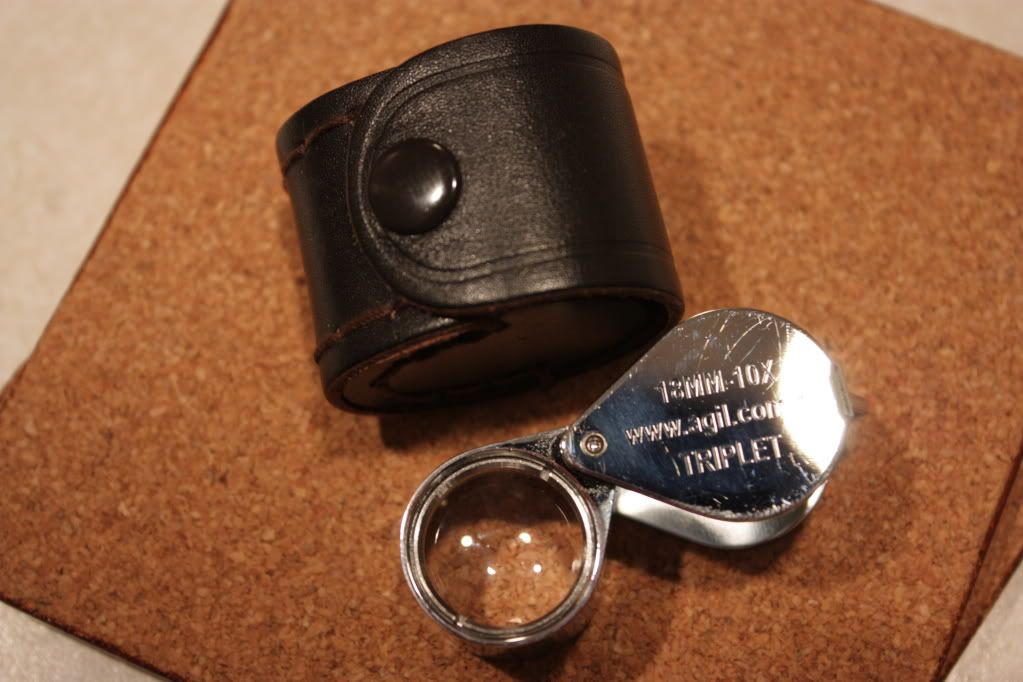
And my attempts have had some mixed success
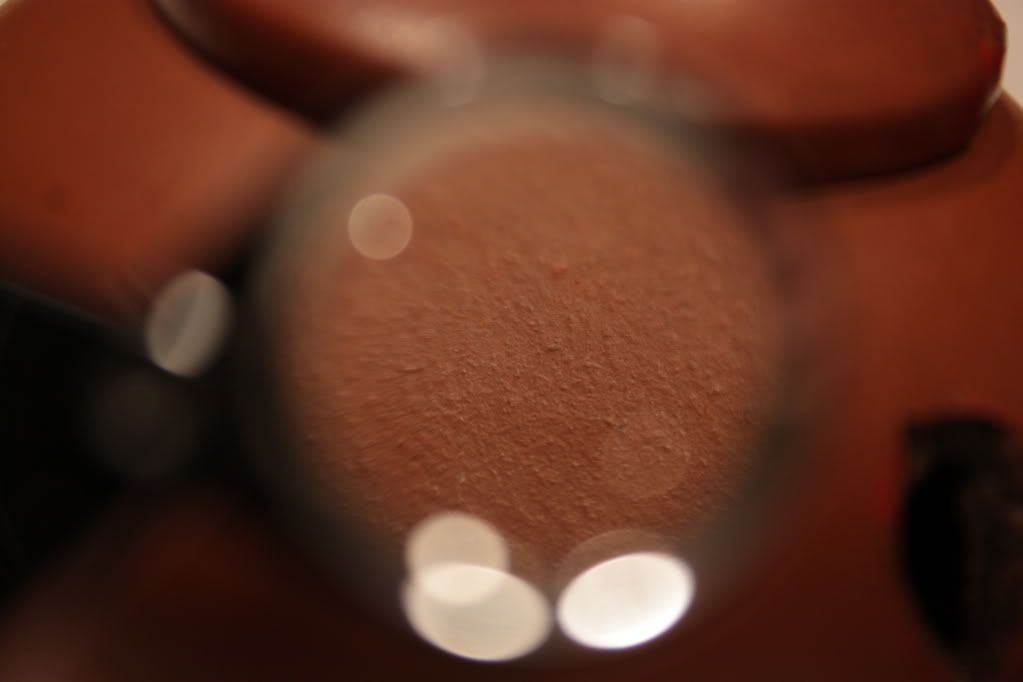
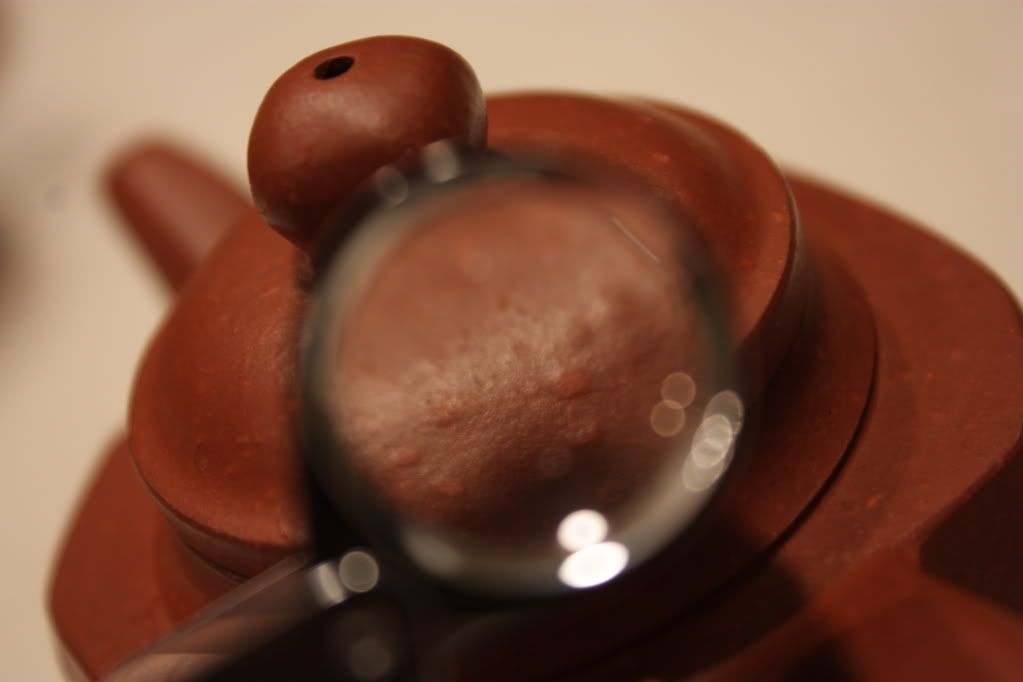
Any thoughts on how I can better do this? I suppose getting a holder of some kind might be a first step? Are there lenses out there that will do this job? I await the photographers out there to help me solve this problem.

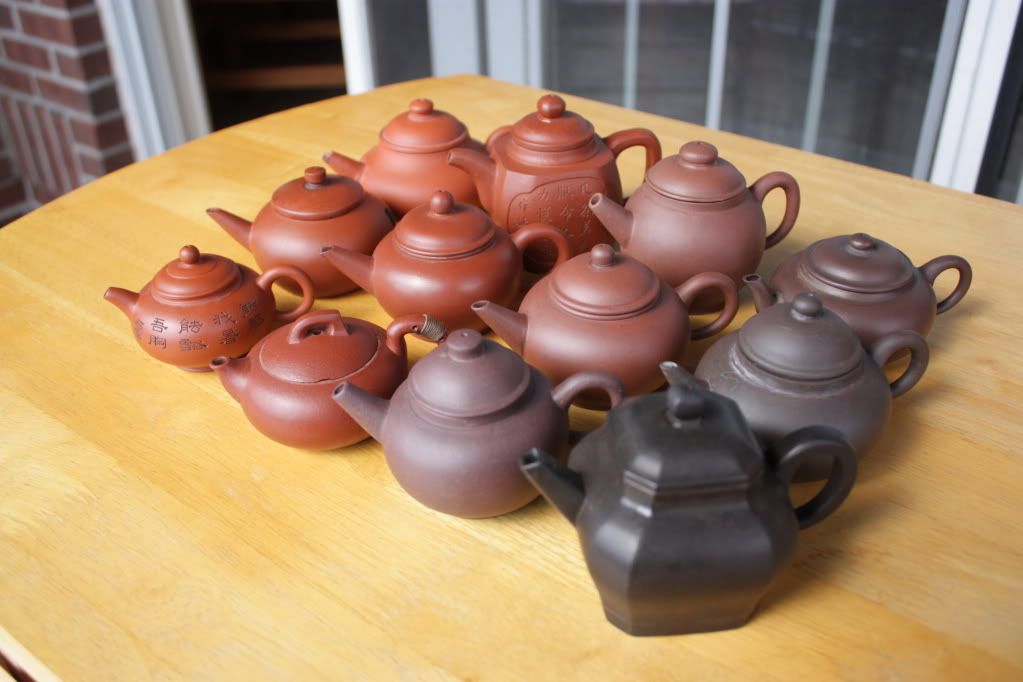
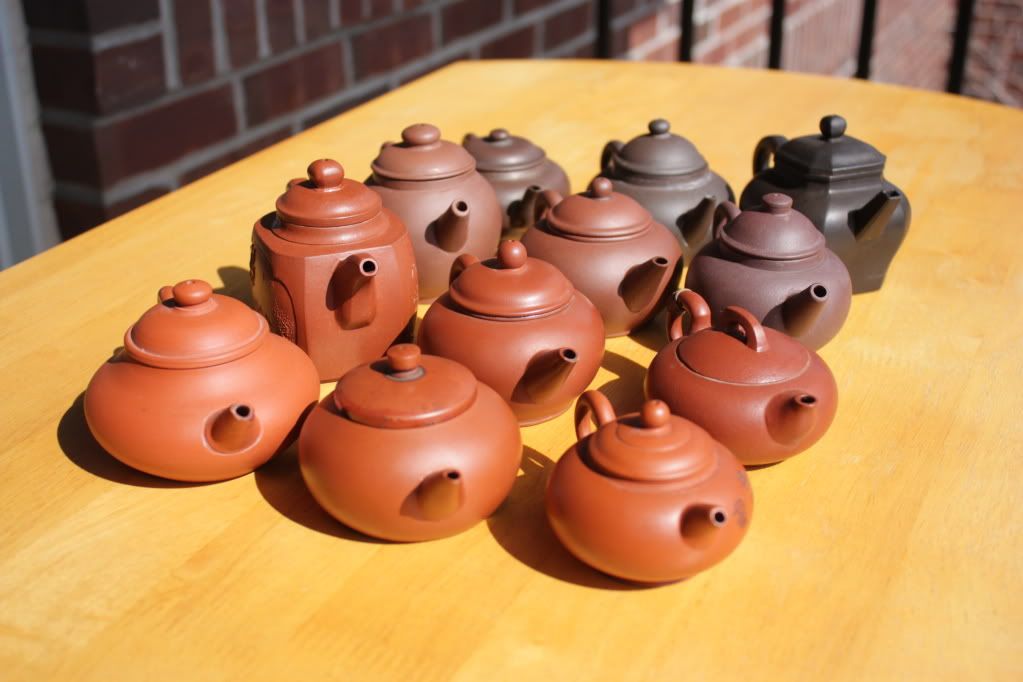
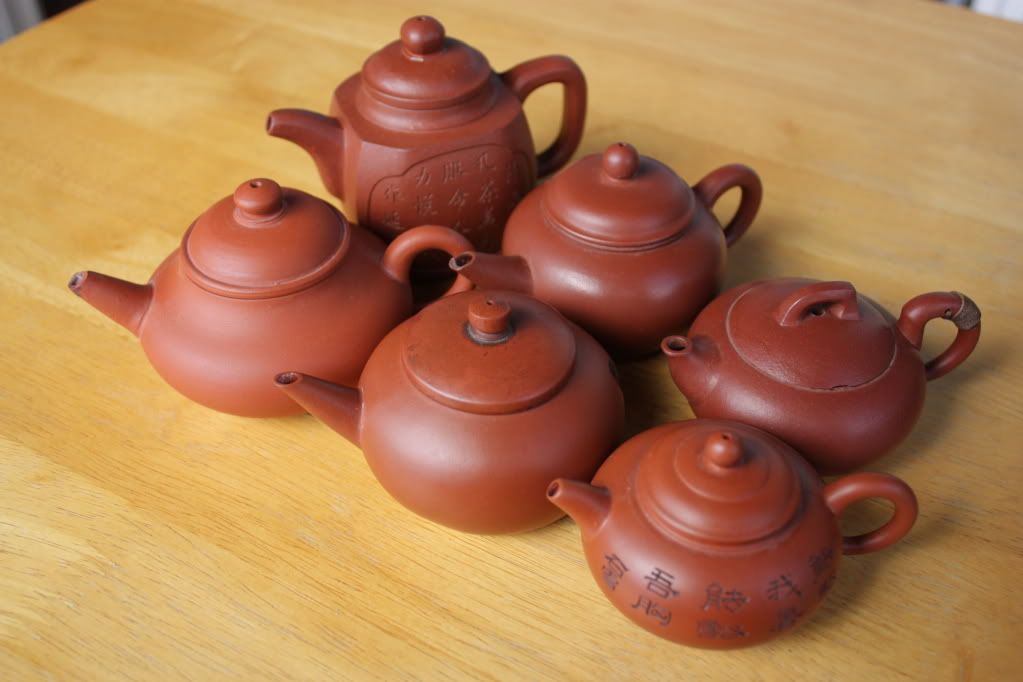
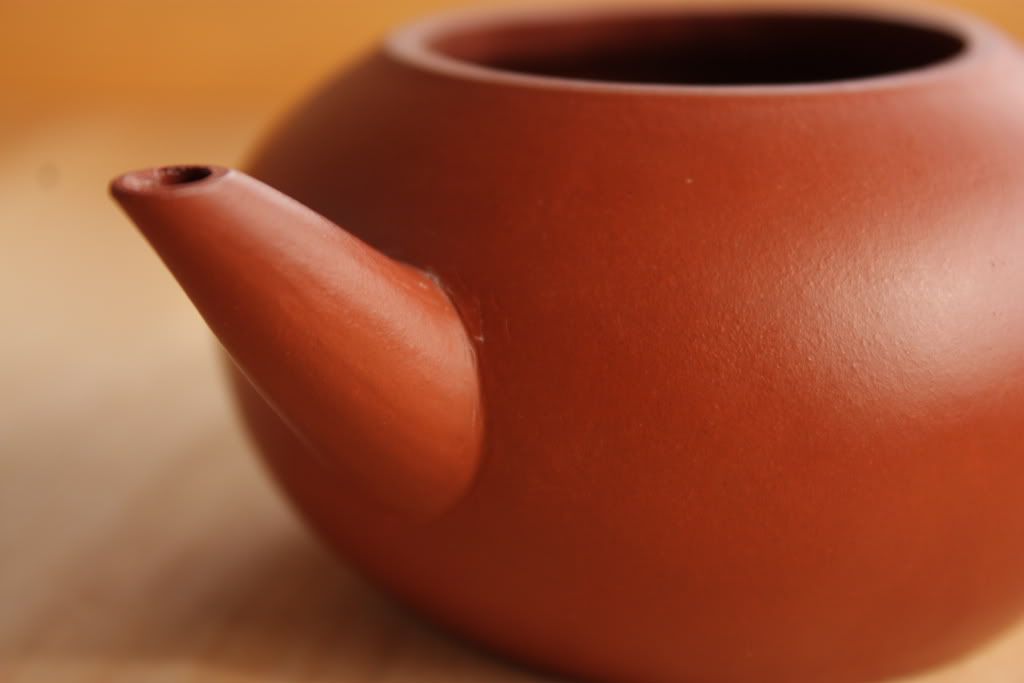
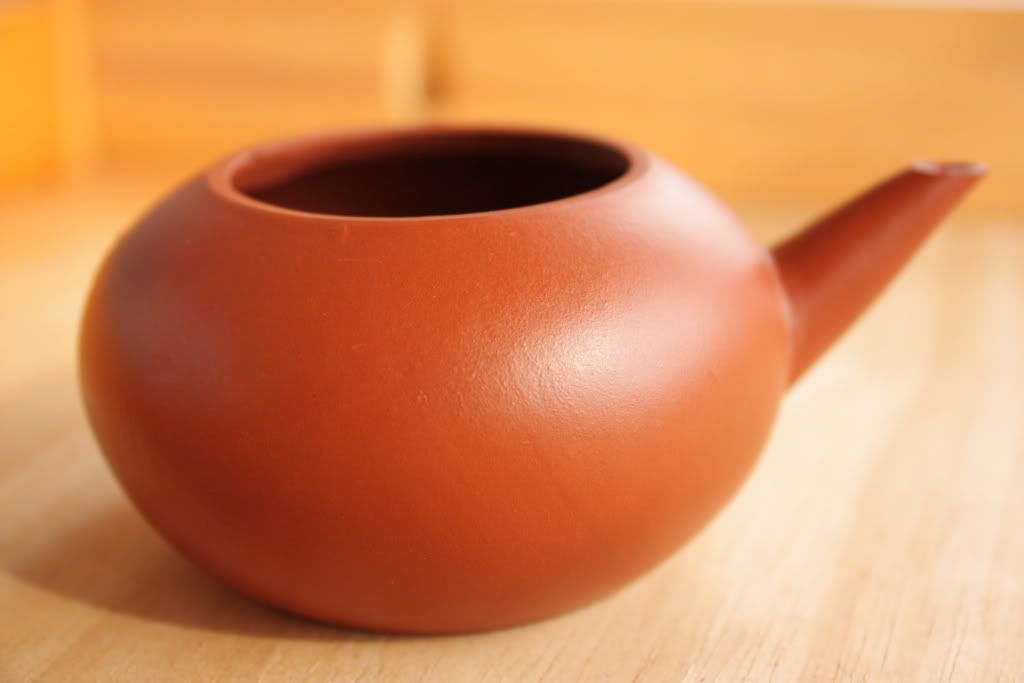
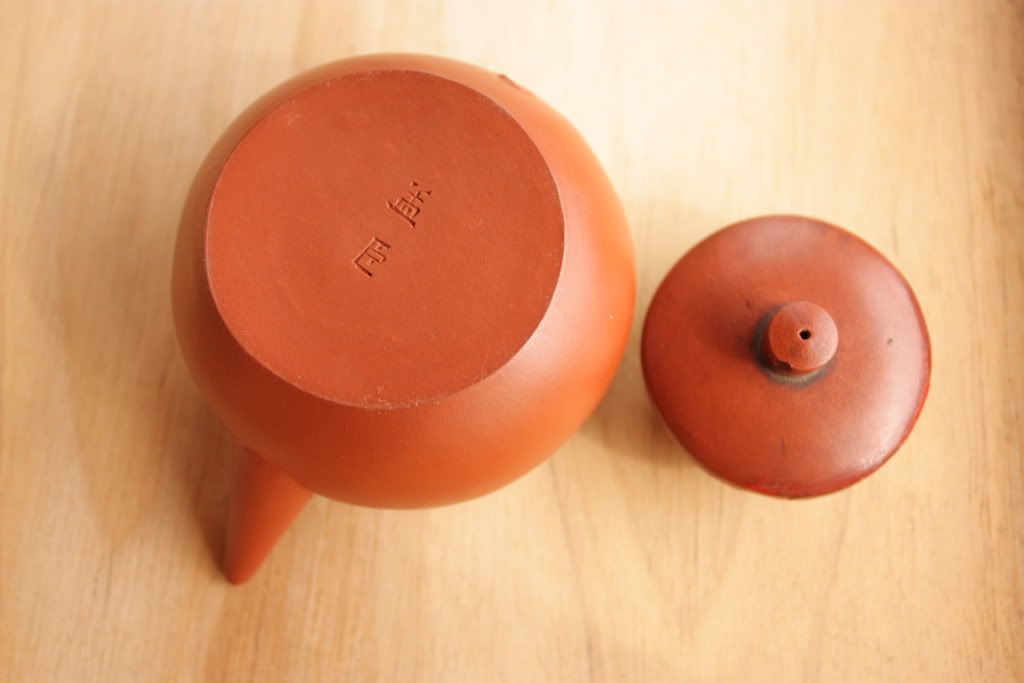
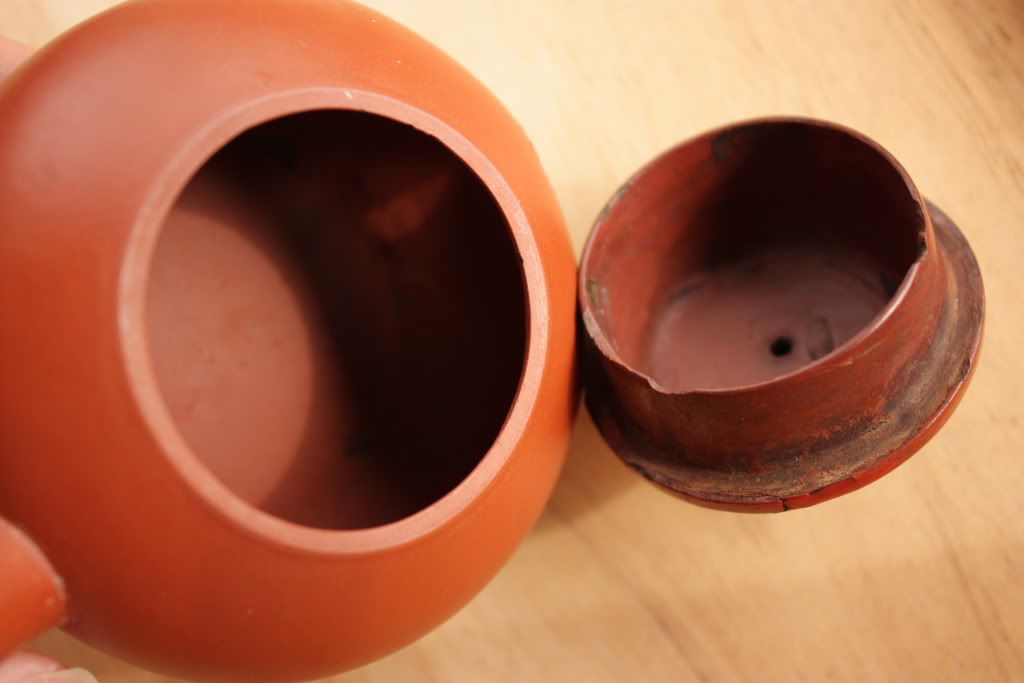
 RSS - Posts
RSS - Posts
Interesting.... would 250C in my oven work?